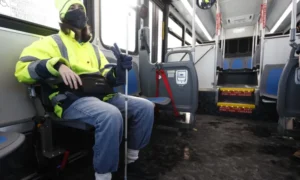Virginia’s transportation infrastructure has undergone a significant transformation with the introduction of smart roads. These innovative roadways, equipped with advanced technologies and intelligent systems, are revolutionizing the way people and goods move within the state. In this article, we will explore how Virginia’s smart roads are changing transportation, improving safety, enhancing efficiency, and promoting sustainable practices. From intelligent traffic management to connected vehicles, the state is leading the way in creating a modern and interconnected transportation network.
Intelligent Traffic Management Systems
Intelligent traffic management systems are a cornerstone of Virginia’s smart roads. These systems leverage data collection and analysis to optimize traffic flow, reduce congestion, and enhance safety. Through a network of sensors, cameras, and advanced algorithms, these systems monitor traffic conditions in real time, allowing authorities to make informed decisions and implement proactive measures.
Adaptive Traffic Signal Control:
One of the key components of intelligent traffic management is adaptive traffic signal control. Using data from sensors and traffic cameras, these systems dynamically adjust traffic signals to optimize traffic flow. By reducing wait times and minimizing congestion, adaptive traffic signal control improves travel time and reduces emissions, making transportation more efficient and sustainable.
Incident Detection and Management:
Smart roads incorporate incident detection systems that can quickly identify accidents, disabled vehicles, or other incidents. This real-time information enables authorities to respond promptly, minimizing the impact on traffic flow and improving safety. Through automated alerts and coordinated response strategies, these systems help mitigate risks and enhance emergency services’ efficiency.
Connected Vehicles and Cooperative Systems
Virginia’s smart roads are also at the forefront of the connected vehicle revolution. These vehicles are equipped with advanced communication technologies that enable them to exchange information with other vehicles, infrastructure, and traffic management systems. The integration of connected vehicles and cooperative systems holds immense potential for enhancing transportation safety and efficiency.
Vehicle-to-Infrastructure (V2I) Communication:
Smart roads facilitate vehicle-to-infrastructure communication, allowing connected vehicles to receive real-time information about traffic conditions, road hazards, and traffic signal timings. This communication enables vehicles to make informed decisions, such as adjusting speed, route planning, and predicting potential risks. By facilitating seamless interaction between vehicles and the road network, V2I communication enhances safety and optimizes traffic flow.
Vehicle-to-Vehicle (V2V) Communication:
Connected vehicles can also communicate with each other using vehicle-to-vehicle technology. Through V2V communication, vehicles can exchange data about their speed, position, and intentions. This exchange of information enables cooperative maneuvers, such as platooning, where vehicles travel closely together in a synchronized manner, reducing aerodynamic drag and improving fuel efficiency. V2V communication enhances safety by providing real-time awareness of surrounding vehicles and potential collision risks.
Enhanced Safety and Sustainability
The integration of smart road technologies in Virginia’s transportation system has resulted in significant advancements in safety and sustainability.
Improved Safety:
Smart roads contribute to safer transportation by providing real-time information to drivers, enabling them to make more informed decisions. By alerting drivers about potential hazards, traffic congestion, or adverse weather conditions, these systems help reduce accidents and improve overall road safety. Furthermore, with the integration of connected vehicles, cooperative collision warning systems can detect and notify drivers about potential collisions, mitigating accidents and saving lives.
Sustainable Practices:
Virginia’s smart roads embrace sustainability by reducing congestion and emissions. By optimizing traffic flow and minimizing wait times, intelligent traffic management systems reduce fuel consumption and greenhouse gas emissions. The integration of electric vehicle charging infrastructure along smart roads also encourages the adoption of electric vehicles, contributing to a greener transportation system. Furthermore, the use of smart road technologies enables more efficient transportation planning, promoting sustainable practices and reducing environmental impact.
Virginia’s smart roads have emerged as a game-changer in the field of transportation. Through intelligent traffic management systems and the integration of connected vehicles, these roadways are revolutionizing the way people move within the state. The enhanced safety, improved efficiency, and sustainable practices fostered by smart road technologies have the potential to shape the future of transportation not just in Virginia but across the globe, says a car accident lawyer in Portsmouth. As these innovations continue to evolve, we can expect even more transformative changes in the way we commute, delivering a safer, more efficient, and sustainable transportation network.



































